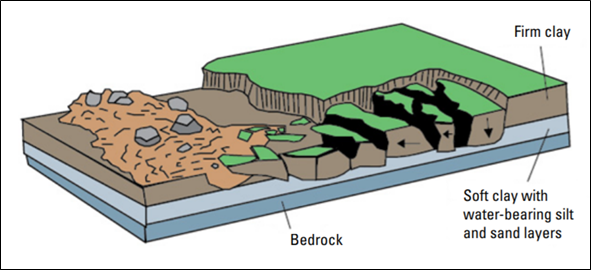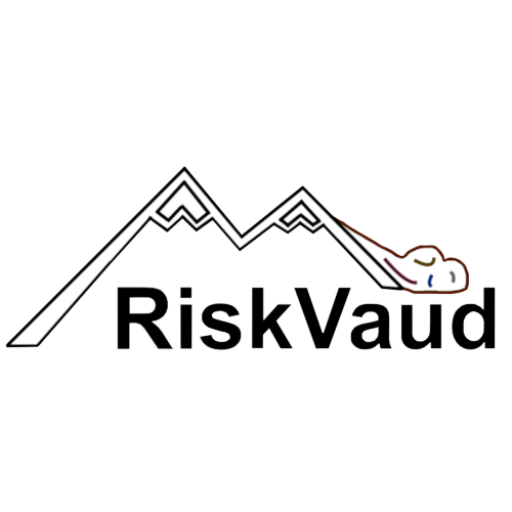Spreads
By Angie Ramirez
A surface can exhibit spreads if a soft or weaker material is found under a more rigid material. This soft material is subject to liquefaction or plastic flow, then the harder material on top subsides or/and moves laterally.
It is imperative to understand that liquefaction occurs when materials loose without cohesion (soft material) are saturated and change their behaviour from a solid to a liquefied state.
Different sorts of spreads can be developed: block spreads, liquefaction spread, and lateral spreads. The image shows a scheme of lateral spread. These usually occur in a low slope to an almost flat surface, where shear or tensile fractures appear as a result of the lateral extension movement.
This change in the weaker material could be triggered by saturation due to water leakage, precipitation and/or snowmelt, and earthquake shaking.

Schematic of a lateral spread. (From Highland & Bobrowsky, 2008)
